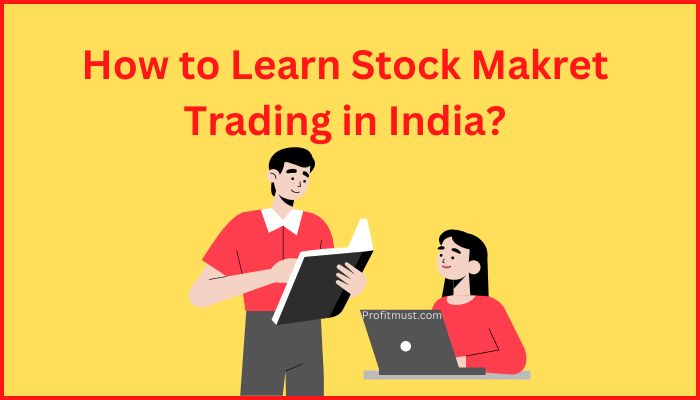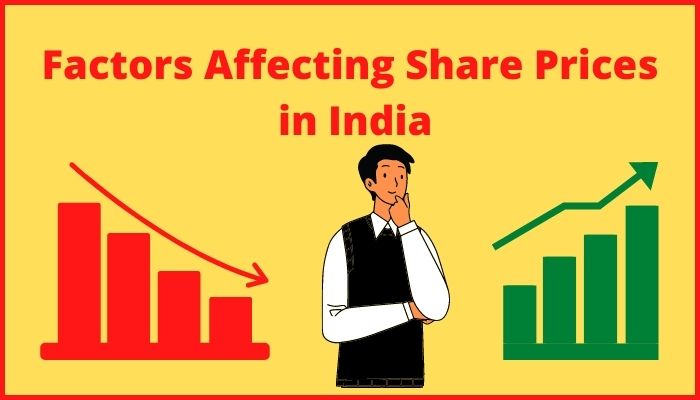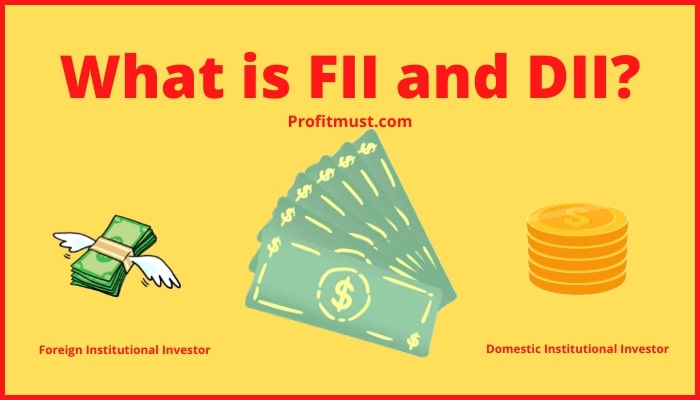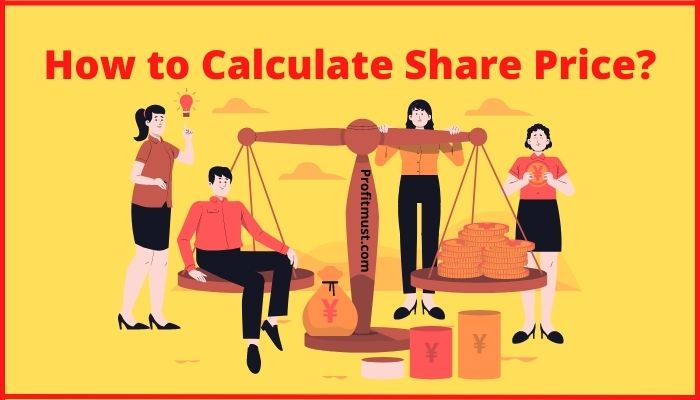In essence, the share market, like any other market, is powered by supply and demand. When a share is sold, the buyer and seller trade funds for ownership of the shares.
The new market price is determined by the price at which the stock was bought. People, on the other hand, are frequently puzzled as to how to calculate share price. Let’s look at an example of share price formula in this article.
Table of Contents
How to Calculate Share Price?
To calculate a stock’s market cap, you must first calculate the stock’s market price. Take the most recent updated value of the firm stock and multiply it by the number of outstanding shares to determine the value of the stocks for traders.
The price to earnings ratio is another way to figure out how much a stock is worth. The P/E ratio is calculated by dividing the stock price by the latest 12 months’ earnings.
P/E ratio X Earnings per Share Equals Stock’s intrinsic value
Growing businesses have a greater P/E ratio, but established businesses have a lower rate of P/E growth.
Share Price Calculation Formula Example
Business analysts use a variety of techniques to determine a company’s intrinsic worth. We’ll use Heromoto Corp‘s financial data as well as the most common stock price formulas. The Heromoto Corp’s financial data is listed below:
- Current Stock Price: INR 2,465
- Last 12-months earnings per share: 148.39
- Annual Sales: 30800.62
- Annual Dividends per share: 105
- Historical P/E ratio: 18.53
- Book Value per Share: 1840.79
-
share price calculation formula Using P/E Ratio
Let’s suppose Heromoto’s P/E ratio has been 18.53 in the past 2465 divided by 148.39 = 16.6 times the current P/E ratio. The present stock price should be 18 times its historical P/E ratio if it were trading at its historical P/E ratio of 18. 2754 is equal to 148.39.
On this share price calculation criteria of , Heromoto’s present stock price is undervalued. This undervaluation may attract the interest of potential acquirers, and analysts may advise their customers to buy the shares.
This calculation estimates that the Heromoto’ earnings per share will remain unchanged in the coming year. If earnings are predicted to rise, the estimated share price will rise even more.

-
share price calculation formula Using Benjamin Graham Formula
When Benjamin Graham share price calculation formula is used to Heromoto, the Graham number is as follows:
Graham Number = Square root of (18.53 x 1.5(148.39) x 1840.79) = 2755 = Maximum intrinsic value
Based on this, Heromoto’s current share price of 2465 is undervalued when compared to its Graham number of 2755.
-
share price calculation formula Using Dividend Discount Formula
When Dividend Discount formula is applied to heromoto, the dividend growth rate is anticipated to be 7%, and the shareholders rate of return is estimated to be 11%:
Stock Value = 105/(0.11 – 0.07) = 2625
On this premise, a share of Heromoto trading at 2465 is undervalued in comparison to its intrinsic value as determined by the dividend discount calculation.
These are the major share price calculation formula. Now you completely understand how to calculate stock price.
How to calculate share price formula in IPO
Via the primary market, firm stocks are first issued to the general public in an Initial Public Offering (IPO) to collect money to meet financial needs.
In an initial public offering, the share price calculation is set based on the company’s performance and net present value. The stock price will begin to fluctuate once trading begins, based on the buyers and sellers of stocks in the secondary market.
If there are more buyers for the share, the price may rise, but if there are more sellers, the value may fall.
Elements Which have a direct impact on stock price

Here are the major factors which directly impact the stock price:
-
Supply and Demand
The most important elements that actually influence the share price are supply and demand. When more shares are acquired than sold, the price rises because the stake is sought after the demand exceeds the supply.
When supply and demand are equal, share prices stay steady, with only little price increases and decreases. An initial increase can be predicted if one of the reasons outweighs the other.
-
Results
Earnings and profitability from creating and selling goods and services can have an impact on a company’s stock price.
-
Behavioural factor
The price of stocks can be affected by the actions of traders and investors in the market.
-
IPO Affect
The amount of new shares available for purchase in the market is limited when a company issues them. If a large number of people want to buy these shares, and the supply is limited, the price will rise.
-
Corporate Action
When a corporation buys back its stock from the market, the number of shares in circulation is reduced. Prices may rise as a result of the limited supply.
Elements which have indirect effect on share price
Here are the major factors which indirectly impact the stock price:
-
Economy
Most investors appear to overlook the effects of the present economic situation when projecting stock price changes. The state of the nation’s economy and global economic trends are two important elements that influence stock prices.
Demand for money and stocks will both rise in the event of a lower bank rate (lower interest rate). Nevertheless, if the bank rate is higher (i.e., the interest rate is higher), there will be less demand for funds and stocks.
-
Government Policy
Current policies are consistently described as having a considerable impact on stock market share values. As investors respond positively to the government’s strategies, the stock values of associated enterprises and businesses begin to climb.
Unfavorable strategies, particularly those involving taxes, may, however, cause shareholders to lose faith. As a result, there is a sell-off, which has the potential to send stock values plummeting.
-
Political Situation
This may appear to be a small point, but it is everything but. Investors try to stay away from countries that are undergoing political upheaval or unrest, as this increases the risk of their investments being destroyed.
Furthermore, any significant change in the domestic political environment will have a short-term impact on the price action of stock market securities.
-
Global Cues
If Indian markets delivered high returns, institutional investors (especially FIIs) would engage. As a result of the increased demand for shares, prices would rise.
Institutional investors would sell their shares and invest in other countries’ markets if the returns offered by those markets were appealing. In such circumstances, massive amounts of stock will be sold, lowering prices.

Conclusion
Stock prices are also depending on market sentiments. A stock at higher value looks cheaper in a bull market and a stock with lower value looks expensive in a bear market.
This is all from our side regarding How to calculate share price? Let us know your view in the comment section of share price calculation.
Other interesting blogs related to how to calculate share price?
Factors Affecting Share Prices in India
Frequently Asked Questions about share price calculation formula
How is share price calculated with example?
Let's suppose Heromoto's P/E ratio has been 18.53 in the past. 2465 divided by 148.39 = 16.6 times the current P/E ratio. The present stock price should be 18 times its historical P/E ratio if it were trading at its historical P/E ratio of 18. 2754 is equal to 148.39. On this criteria, Heromoto's present stock price is undervalued. This undervaluation may attract the interest of potential acquirers, and analysts may advise their customers to buy the shares.
How do you calculate share price issued?
In an initial public offering, the stock price is set based on the company's performance and net present value. The stock price will begin to fluctuate once trading begins, based on the buyers and sellers of stocks in the secondary market.
How do you calculate a company's share price?
To calculate a stock's market cap, you must first calculate the stock's market price. Take the most recent updated value of the firm stock and multiply it by the number of outstanding shares to determine the value of the stocks for traders. The price to earnings ratio is another way to figure out how much a stock is worth. The P/E ratio is calculated by dividing the stock price by the latest 12 months' earnings.
Is high PE ratio good?
The quick answer to the question Is a high PE ratio good? is no. The higher the P/E ratio, the more you spend per dollar of earnings. From a pure price-to-earnings standpoint, a high PE ratio is undesirable for investors.
What is price per share?
The price per share, or PPS, refers to the monetary value paid or received for a single share of stock. The price per share can assist investors in determining whether or not to purchase a company's stock.

